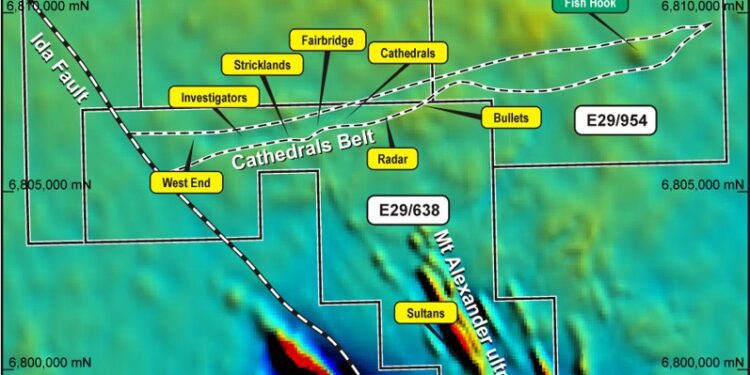Soil Assays Highlight Exploration Upside At Flagship Project
Western Australian nickel company St George Mining Limited (ASX: SGQ) has identified a highly anomalous nickel-copper soil anomaly in an unexplored area at its flagship Mt Alexander Project, located in the north-eastern Goldfields of Western Australia.
John Prineas, St George Mining’s Executive Chairman, said the results of the soil survey at E29/1041 are very exciting and warrant high-priority follow-up at this unexplored area of the Mt Alexander Project.
“The peak soil values at E29/1041 are coincident with the strong magnetic features and provide a compelling target for potential nickel-copper sulphide mineralisation,” Mr Prineas said.
“These anomalous soil values are higher than anything we have seen at the Cathedrals Belt, where a number of high-grade nickel-copper sulphide discoveries have already been made.
“The drill rig currently engaged at our Paterson Project has another two weeks’ work to do there before it will be mobilised to Mt Alexander to begin drilling on E29/1041 – at the newly named Carnac Prospect.
“Drilling and exploration to date at Mt Alexander has successfully focused on the Cathedrals Belt, where numerous discoveries of high-grade nickel-copper sulphides have been made.
“That success has encouraged us to ramp up field work across the broader Mt Alexander tenement package and we are delighted that our systematic exploration on this 100%-owned tenure – where there has been no previous exploration – has already identified some exciting opportunities.”
The potential at E29/1041 was first recognised in a review of historical regional government magnetic data for the tenement, which showed two distinct magnetic trends with an east-west strike of approximately 8km that are potentially analogous to the similarly oriented Cathedrals Belt.
Rock chip sampling and field mapping at the tenement were completed earlier in 2021 by St George. XRF analysis of rock chips from the area of the magnetic trends recorded metal values of up to 2,475ppm Ni and 105ppm Cu in the mafic rocks. These values are interpreted as being too elevated for barren Proterozoic dolerite dykes and more indicative of potential intrusive-style rocks. These encouraging early results warranted follow-up exploration.
An orientation geochemical soil survey at E29/1041 was commenced on widely spaced 200m traverses with coverage over the two distinct magnetic trends – an area of interest that is now named the Carnac Prospect. In addition to the soil sampling, a high-resolution airborne magnetic survey with 100m line spacing was completed by St George at E29/1041. The data confirmed the presence of two distinct magnetic trends that cut across each other.
The main east-northeast trend shows a series of strong, linear magnetic features – with the same orientation as the Cathedrals Belt. Significantly, the features within E29/1041 appear to have a stronger magnetic response than at the Cathedrals Belt and may represent a series of intrusive units analogous to the Cathedrals Belt.
For further information please visit: https://stgm.com.au/












